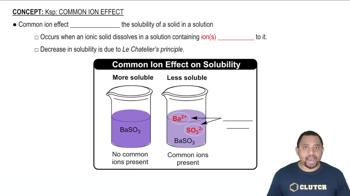Here are the essential concepts you must grasp in order to answer the question correctly.
Oxidation States
Oxidation states are a way to keep track of electrons in chemical compounds. They indicate the degree of oxidation of an atom in a substance, which helps in determining the charge of ions. In ionic compounds, the oxidation state of an element can often be inferred from its position in the periodic table and its typical bonding behavior.
Recommended video:
Ionic Compounds
Ionic compounds are formed when atoms transfer electrons, resulting in the formation of positively charged cations and negatively charged anions. The overall charge of the compound is neutral, meaning the total positive charge from cations must balance the total negative charge from anions. Understanding the composition of these compounds is essential for assigning charges to the ions present.
Recommended video:
Common Anions
Common anions are negatively charged ions that frequently occur in various compounds. For example, in the case of oxygen, it can form anions such as oxide (O^2-) and peroxide (O2^2-). Recognizing these common anions and their typical charges is crucial for accurately determining the charges in compounds like Na2O and K2O2.
Recommended video:
 Verified step by step guidance
Verified step by step guidance

